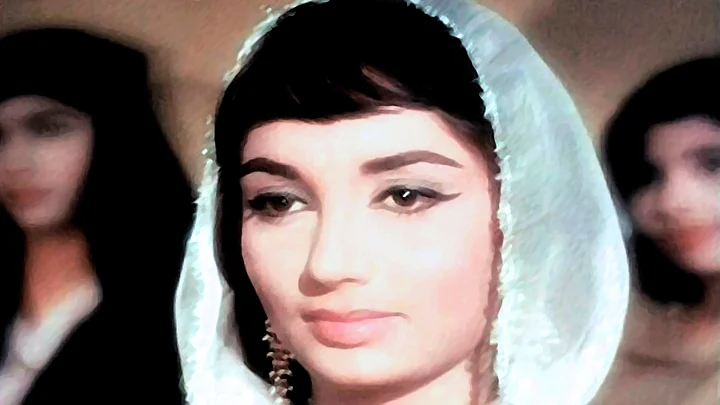“I spit into the face of Time
That has transfigured me.”
― W.B. Yeats, The Rose
When Greta Garbo’s Grusinskaya uttered the line “I want to be alone” in Grand Hotel (1932), it had a premonition of a mysterious legacy. Garbo’s idea of shunning public life and evaporating into total seclusion has given birth to one of cinema’s most enigmatic legends. The idea of a beauty that refuses to age has inspired many.
Suchitra Sen, the famous Bengali actress is the Indian counterpart. Sadhana, the svelte beauty of yesteryear who breathed her last on Friday morning, was another celebrity who understood Garbo’s Achilles heel.
Like most stars, Sadhana’s family shifted their base from the other side of the border during Partition. Her first tryst with the camera was as a chorus girl in Raj Kapoor’s Shri 420 (1955). It was followed by a Sindhi film, Abana (1958), in which she played second fiddle to Sheila Ramani.
The publicity still of the film caught the fancy of movie mogul Sashadhar Mukherjee who enrolled her in acting school, and gave her the big break she was looking for. The film was Love In Simla (1960) in which she was paired opposite Mukherjee’s son Joy. The light-hearted romance was helmed by Raj Kapoor’s assistant RK Nayyar who was soon smitten by Sadhana, and by the time the film was finished, they were madly in love. In a double whammy, Love in Simla turned into a hit and Sadhana tied the knot with her director.
Nayyar was also the man instrumental for the famous Sadhana hair-cut, a fringe cut inspired by Hollywood beauty Audrey Hepburn. The trick was to hide her broad forehead, and it turned out to be a blessing for her. The Sadhana-fringe became a rage, and it instantly made her a fashion icon. This was to be followed by the churidar kurtas she wore in Waqt (1965), which was yet another trend setter.
Watch: Lag Jaa Gale from the movie Woh Kaun Thi (1964)
Watch super hit song Jhumka Gira Re from the movie Mera Saaya (1966)
Watch Saamne Mere Saanwariya from Manoj Kumar-Sadhana starrer Anita.
As an actor, she grew from strength to strength, working with powerful directors like Bimal Roy, Raj Khosla and Yash Chopra. While Bimal Roy gave her a role of understated simplicity in Parakh (1960), and Yash Chopra portrayed her as the fashionable, desirable heroine, it was Raj Khosla who gave her the woman-centric mystery thriller trilogy ― Woh Kaun Thi (1964), Mera Saaya (1966) and Anita (1967). Khosla’s films, especially Woh Kaun Thi and Mera Saaya, had characters that were author backed, seductive and grew in the audience’s mind with strong melodies.
This was also the time she was battling thyroid problems. After a lengthy treatment, she returned to the silver screen, and delivered two consecutive hits, Intequam and Ek Phool Do Mali, in the same year.
But much water had flown by then. The eyes that inspired lyricists to write odes were affected by her health issues, and it became a talking point among producers. As fate beckoned, the producers’ interest receded, and offers slowly dried up.
Refusing to give in to character roles of mother and other roles, she chose to retire. Her friends and gardening took most of her time. She was seldom photographed, and requests for interviews were always declined. Years later, she came back to spotlight during an ongoing litigation with her landlady Asha Bhosle. Soon, death came knocking at her door.
Sadhana couldn’t face the fate of fading into old age in public eye, and hence lost herself in the labyrinth of solitude. But in her songs, she could find the rare solace, of being remembered, again and again.
(At The Quint, we question everything. Play an active role in shaping our journalism by becoming a member today.)
